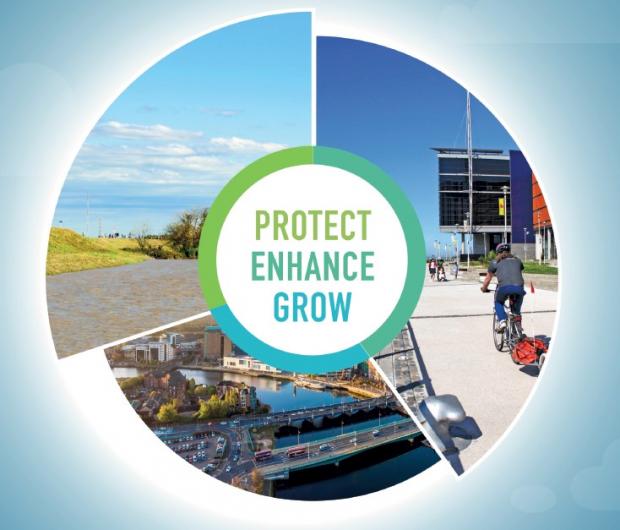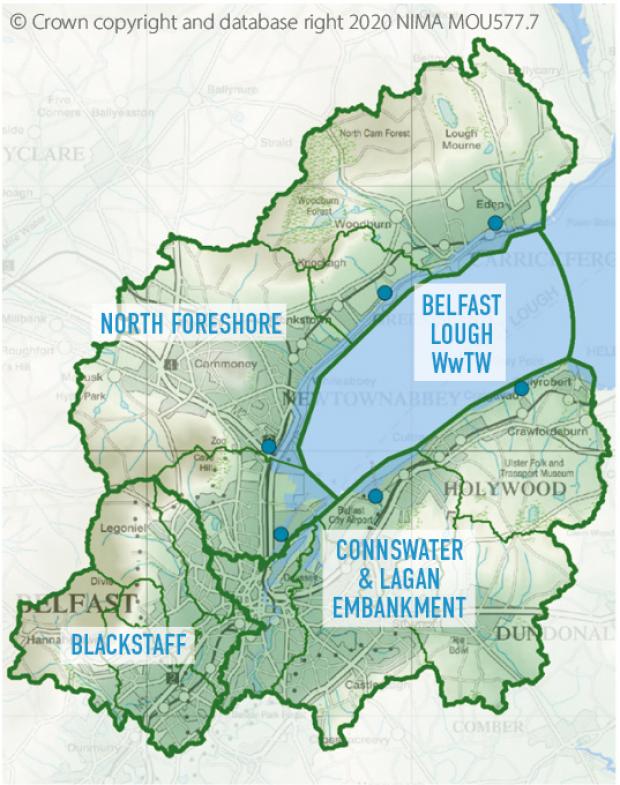Since 2015, stakeholders have been working together to understand common risks, the scale of interdependencies between the various types of drainage and wastewater systems and to identify opportunities for integrated sustainable solutions. Innovative modelling and planning approaches have been initiated and these will continue to progress over the Plan period alongside public engagement and detailed design work, to develop a programme of capital improvements. The timing and pace of implementation of the Plan will also be dependent on securing the necessary funding and approvals.

On 11 November 2020, the Department issued a public consultation on the draft Belfast Strategic Drainage Infrastructure Plan, entitled, “Living With Water in Belfast”. The consultation ended on 29 January 2021 and a total of 31 largely positive responses were received. These are summarised in a report published in November 2021 which can be viewed at: Living With Water in Belfast Consultation Report
The Final Belfast Plan
Following the Executive’s agreement to publish the Living With Water in Belfast Plan at its meeting on Thursday 21 October 2021, the Minister launched the Plan at a Natural Flood Management / Sustainable Drainage demonstration project, which is currently under construction within the grounds of Belfast Castle. The final Plan can be viewed at: Living With Water in Belfast Plan
The Plan coordinates the strategic planning of future drainage works for more efficient and effective management, allowing for the future growth and prosperity of the city, greater protection from flooding and the enhancement of the water environment.
In accordance with the principles set out in Sustainable Water - A Long Term Water Strategy for Northern Ireland the Plan has the following key aims:-
|
Key Aims of Living With Water in Belfast |
|
|---|---|
|
1. |
Reduce flood risk in compliance with the Floods Directive (Protect) |
|
2. |
Maintain and achieve environmental compliance by improving the quality of water in the rivers and Belfast Lough (Enhance) |
|
3. |
Support economic growth by enabling development (Grow) |
|
4. |
Maintain essential drainage and wastewater assets |
|
5. |
Adapt to climate change by providing increased resilience |
|
6. |
Where possible, as part of the solutions, provide new and improved amenity benefits to the community |
|
7. |
Reduce the burden of operational costs relating to drainage and the provision of wastewater services |
|
8. |
Determine the most cost effective solutions through integrated investment planning. |
Geographical Scope
The geographical scope of the Plan covers the whole of the Belfast City Council area, as well as lands that are within four other local council boundaries: Lisburn & Castlereagh City, Antrim & Newtownabbey Borough, Mid & East Antrim Borough and Ards & North Down Borough. This is to ensure that flooding and water quality issues can be addressed in the optimum way to cover the drainage areas of each of the six WwTW that discharge into Inner Belfast Lough.

- Blackstaff - which extends westwards to include the portion of the Colin Glen River catchment that is within the Belfast WwTW drainage area.
- Connswater & Lagan Embankment - which extends eastwards to include Dundonald and Crawfordsburn.
- North Foreshore - which extends northwards to include Carrickfergus and Mallusk / Newtownabbey.
- Inner Belfast Lough – which includes the 6 wastewater treatment works that discharge into it and their associated sewerage networks.
